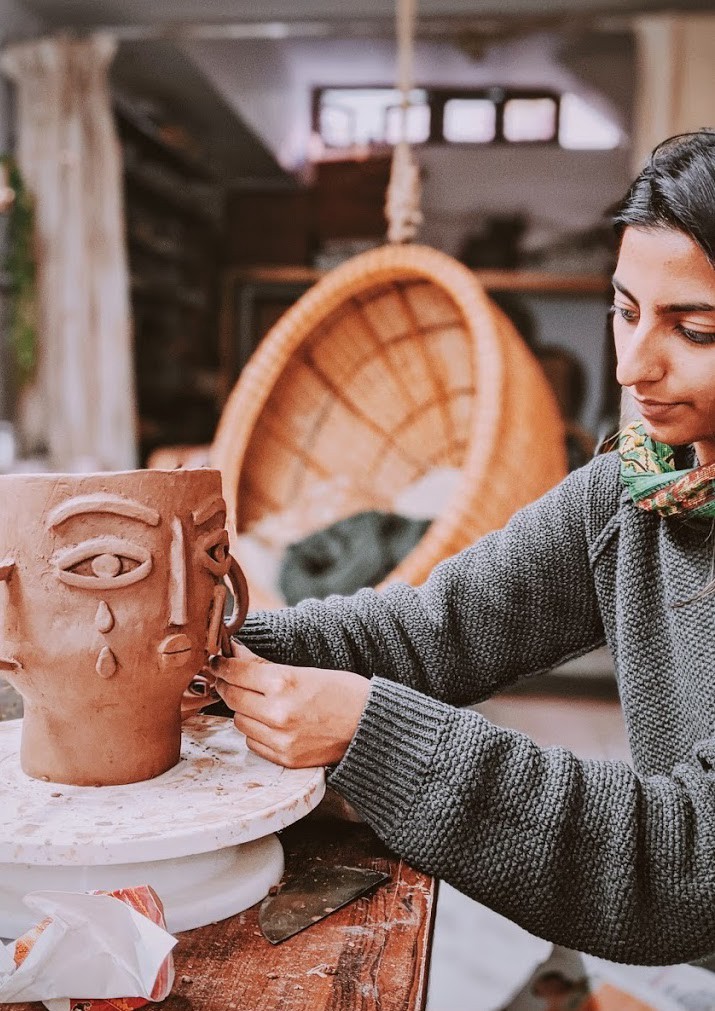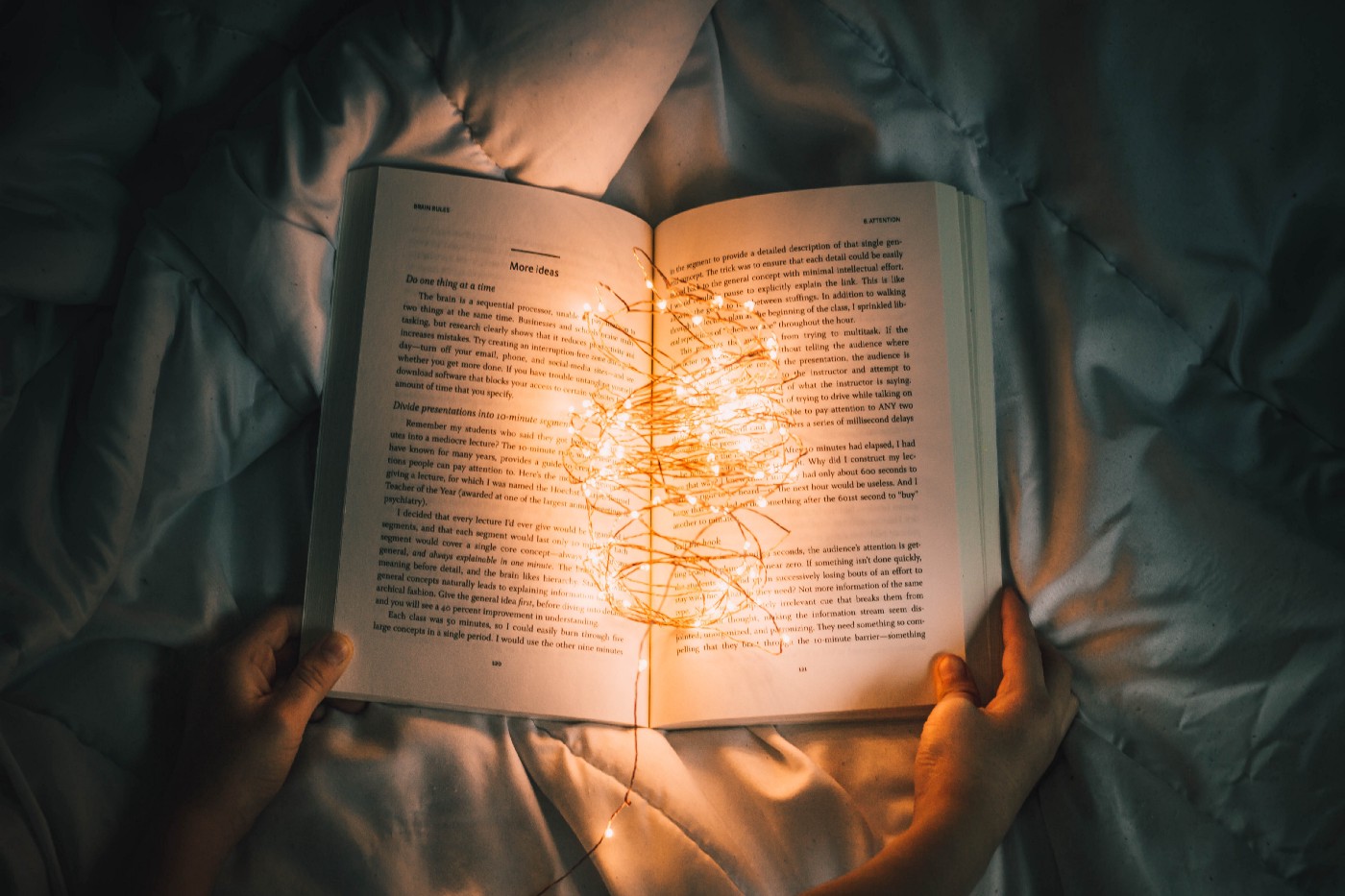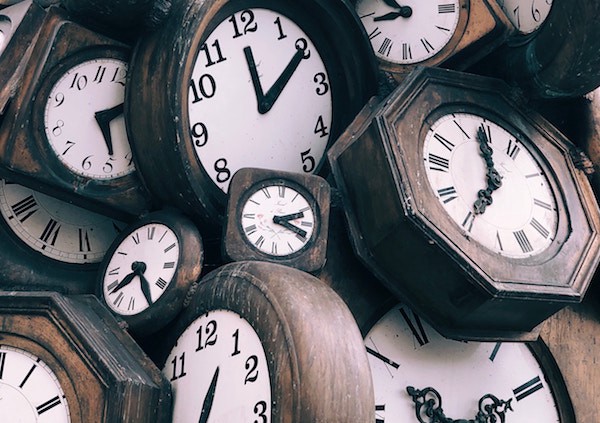I took a (unintentional) gap year after college.

The first thing that I made in the studio was a medium sized bowl, about eight inches in diameter. Akanksha, the artist/teacher/friend who taught me how to roll my first slab of clay, assured me that I’d be able to make everything that I saw on display. I’d point to different pieces and say “This looks insane. I couldn’t possibly do this”. In response, I’d hear, “Oh you can do that too, it’s not that hard.”
Well, newsflash: It isn’t easy. It’s time-consuming, intricate and the most excruciating test to one’s patience. But I understand her words now. Although it’s a strenuous process, it’s broken down into various steps. After years of doubting my knack for creativity, I realized that crafts are different from art. With enough focus and repetition, a completely inexperienced person can learn a craft in a short span of time. I recently learned that a repetitive task like clay building can stimulate the effort-driven reward circuit in our brains. Crafts have the potential to rewire our brain chemistry. I especially enjoy the manual labor because it means that I have less screen time than the average person.

My friends/teachers are always willing to share their knowledge. This is what drew me back to the studio time and again. Maybe because these qualities carry over into other aspects of life? When I started learning ceramic art, I never would’ve imagined meeting such incredible people. Before the global pandemic, there were weekly classes and workshops so I’d meet new people quite often. Most of us would work in silence but every so often someone would speak and we’d all contribute our bit to the conversation.
The longest way around is the shortest way home
The ceramics studio in Chandigarh, India belongs to one of my closest friends. I don’t want to get into the geographical whirlwind of my life but I met Vidhi 10 years ago. Ever since high school ended, we haven’t been graced with the quality time that we would’ve liked. Life happens, friends move. We rearrange and somehow find a way back to the same people. When the global pandemic came around, all our plans shifted drastically. My time in India extended yet again. The studio would no longer have new faces. My initial bout of anxiety was cured by the fact that I could live with a close friend (the studio happens to be in the basement of her house). In our minds, this was the quality time that we’d craved since high school.
Best part about living together: we ate all our meals and drank chai in functional ceramic ware!


After spending hours with a lump of clay, the mind tends to wander. I have gone through a lifetime of memories in the past six months. As I rummaged through old memories, I started to find peace with my current existence. There was an awful lot that I blocked out over the years. It turns out, the thinking mind isn’t my greatest enemy. It’s a tool to help me understand my actions and decisions better. It’s helped me determine patterns but more importantly, it’s helped me let go of the need to determine patterns. Ultimately, I’m not defined by any of those behaviors. Once I gave myself the chance to let go of old storylines, I became less judgmental, towards myself and others. Feelings of love, desire, attachment and joy are all very essential to the human condition. But I am learning, with the help of this craft, to not get swept away by these emotions.
A few months ago, I read something about “actor-less actions”. It’s the idea of taking action without focusing too much on the egoic self. Perhaps we can still achieve our goals under this framework. It may even lead us to being more present because there’s less anxiety attached to the action. If our actions are no longer driven by ego, maybe we’ll feel less attached to the consequences of those actions? This reminds me of my relationship with clay because there’s so much failure and uncertainty involved. The mind slowly detaches from the result of the process and taps into another field of awareness. When I think back on our time in quarantine, I like to call it a ‘directionless direction’.
The unlimited potential to problem solve in the studio has given me a new toolbox to work with, one that extends well beyond the studio. I learn to surrender (to the clay) when I must. I learn to take control (of the clay) when possible.
Here are some pieces that I worked on over the last few months!
Completed Projects

Terracotta planters inspired by Miri Orenstein








Works in Progress

The Mangbetu Peoples of Zaire
I’ve always been fascinated with indigenous art. This project marks the beginning of research that will explore the Mangbetu peoples of Congo and the use of pottery in their communities. I’m always finding ways to overlap my interest of Anthropology and Art.









